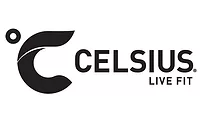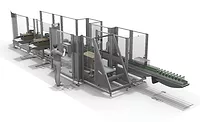Case Closed
Case Closed
By JENNIFER KOROLISHIN
Bigger pack sizes, faster line speeds and marketing
factor into case packing and wrapping choices
Getting beverages from the
plant to the shelf safely depends on the way cases of product are packed or
wrapped for transport. Beverage-makers must consider a number of critical
factors in choosing a case packing or wrapping method.
First, manufacturers must choose a material base,
which depends on the filling line speed and the type of beverage packaging
used; popular options include fiberboard or paperboard cartons, corrugate
cases and corrugate trays or pads wrapped with shrink film.
To pack or wrap beverage cases, two types of equipment
are typically used by U.S. manufacturers: lower-speed, intermittent-motion
equipment, also called indexing equipment, which packs approximately 30
cases per minute or less; or continuous-motion equipment that runs at
higher speeds. Lower-speed equipment is often used for juice, milk and
small-batch beverages. Higher-speed equipment is used for high-volume
beverages such as carbonated soft drinks and beer.
“In making that selection, you have to go back
upstream to the bottle or can filler and determine what that filler rate
is,” says Sales Engineer Don Swanson of Douglas Machine Inc., an
Alexandria, Minn.-based paperboard, corrugated and shrink-film packaging
solutions provider. “Then, you divide the number of bottles per
minute by how many bottles or cans are going be in each pack pattern. That
determines the machine speed needed.”
Packing and wrapping considerations
While speed has a major impact on how cases are
packed, marketing is also important, as it factors into packaging design
and consumer perception of the beverage.
“A major factor is marketing and whether the
consumer will buy it,” says Steve Sonderman, director of pack and
palletizing technology for Franklin, Wis.-based Krones, Inc., a global
filling and packaging equipment and systems provider. “If you have a
specialty application, from a marketing standpoint, you’re trying to
present an image of quality. For example, in
the beer industry, it’s been difficult to introduce film bundling and
tray packing. The breweries want to stay in the full corrugated case
because anything less begins to give the impression of less quality.”
The distance a product must travel and whether the
product is single-serve or multi-pack also factors into case packing and
wrapping, as does determining whether the end consumer will see that
packaging. Larger, single-serve products, such as 64-ounce bottles of
juice, are usually packed in shipping containers used solely to deliver the
bottles to the store. However, smaller packs, such 12-packs of soda, are
typically placed directly on store shelves.
“A lot of the decision has to do with how far
and in what mode the product is going to be transported from the point of
manufacture to the ultimate point of consumption,” says Douglas
Machine’s Director of Beverage Sales Ed Orick. “If it’s a
store-door-delivery product, it doesn’t go very far. The manufacturer
delivers it themselves, as opposed to the product going to a warehouse and
being handled several times, in which case it would need more
protection.”
Cost is also a major consideration, as most
beverage-makers strive to keep material costs down. “Cost is
definitely a factor,” says Paul Burdick, director of marketing and
sales for Schneider Packaging Equipment Co., a provider of case packing,
robotic palletizing and systems integration, based in Brewerton, N.Y.
“Beverage manufacturers often look at HSC cases vs. wraparounds vs.
the machinery cost to handle the case size as they evaluate long-term
operating costs.”
Reducing the cost of the end package is critical for
most beverage-makers, as well. “The margins in bottled water are very
small,” says Sonderman. “There’s not a lot of money to be
made per bottle, so bottlers try to save wherever they can. Many times the
packaging comes into consideration from that standpoint.”
Case packing and wrapping machines are affected by the
packaging type and size used for a beverage, and as such, changeover speed
is critical. Both intermittent and continuous-motion equipment have to be
able to adapt quickly to different pack sizes.
“Customers today are looking for as much
flexibility as possible because marketing trends change so rapidly,”
says Swanson. “The machines have to be able to easily adapt to those
changes. Plus, manufacturers tend to warehouse less, so they do flavor and
pack pattern changes more often and need fast changeovers.”
Packaging trends
Two important packaging trends affect case packing and
wrapping. First, demand continues to rise for refrigerator packs, the
narrow 12-packs of soda, beer and bottled water designed to slide onto the
bottom shelf of a refrigerator, which have been widely embraced by
consumers.
Second, club stores are requiring beverage-makers to
provide larger pack sizes. “Across the food industry in general, club
stores are definitely having an impact on what we’re doing in
packaging,” says Burdick. “We see larger sizes and more
multiple packs. With juice and milk products, there is demand now for
multi-packs with handle perforations, which is the kind of thing that
wasn’t around a few years ago.”
As pack sizes get larger, packaging integrity
challenges can surface, particularly with shrinkwrapping. Today’s
films are thinner and stronger, but manufacturers still work to perfect the
bulls-eye, the open end of a shrink-wrapped case, which is often used as a
handle by consumers, affecting a case’s performance and appearance.
“Today, there is a greater demand for a higher
quality of package,” says Swanson. “We like to form an even
bulls-eye with smooth corners so the film is not wrinkled because much of
the film used today is printed with high-resolution graphics. Customers
want minimal distortion, so a lot of effort has gone into redesigning heat
tunnels to create a higher quality package.” BI
Looking for a reprint of this article?
From high-res PDFs to custom plaques, order your copy today!




